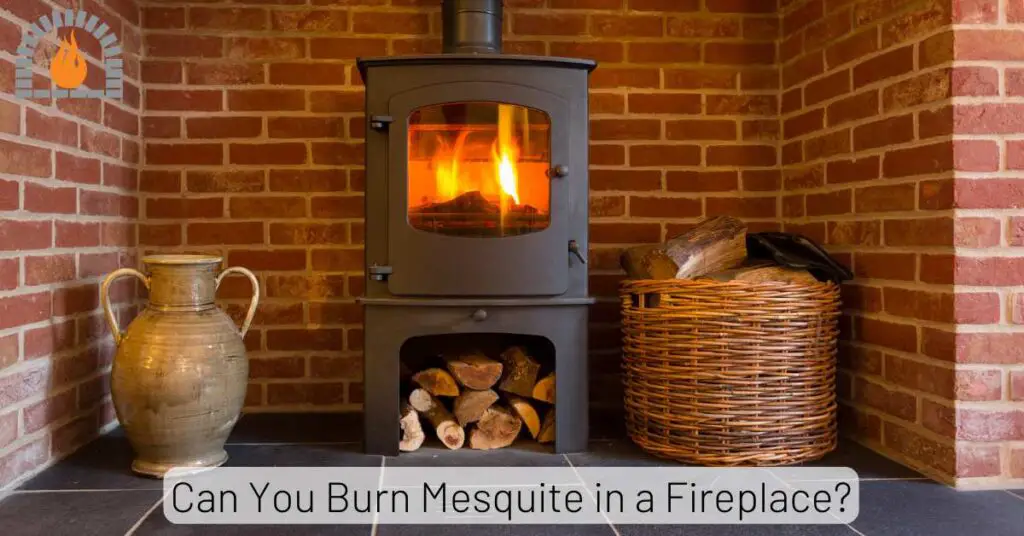When it comes to enjoying the warmth of a cozy fire, properly stored firewood is essential. Whether you store firewood inside, outside, or in both areas, following the right storage methods prevents issues like mold, pest infestation, and moisture damage, keeping your wood dry, safe, and ready for use. So, what are the effective strategies for storing firewood indoor & outdoor
Proper firewood storage enhances its burning efficiency, reducing smoke and increasing heat output.
Let’s delve into expert strategies for indoor and outdoor firewood storage to ensure a safe, efficient experience.
Why Proper Firewood Storage Matters
Improperly stored firewood can lead to serious issues such as mold, mildew, and pests. Moisture is the biggest enemy of firewood because wet wood doesn’t burn efficiently, producing more smoke and less heat.
Storing firewood correctly helps avoid issues that can compromise the quality of the wood. When stored properly, seasoned firewood will burn longer, hotter, and cleaner, providing better overall warmth for your space.
Seasoning Firewood: What It Means and Why It’s Important
Seasoning is the process of drying firewood to reduce its moisture content. Seasoned wood is usually split and stored for about six to twelve months to allow the wood to reach an optimal moisture level (below 20%).
This makes it easier to light, less smoky, and more energy efficient. To season firewood, stack it in a sunny, well-ventilated area where it can be protected from excessive moisture but still receive air circulation.
Tips for Storing Firewood Indoor
Preparing Wood for Indoor Storage
Before storing firewood indoor, ensure it’s free from dirt, pests, and moisture. Only bring seasoned wood indoors, as green or wet wood can create unwanted odors, mold, and insect issues.
Shake off loose bark and dirt and check the wood for any visible signs of insects. By prepping wood thoroughly, you reduce the risk of indoor contamination and make it easier to keep your indoor storage clean.
Finding the Best Indoor Storage Spots
Indoor storage for firewood should balance convenience and safety. Avoid placing wood directly next to a fireplace or stove, as this poses a fire hazard.
Instead, select a spot that’s close enough for easy access but distanced from any heat sources. Small racks or baskets near the fireplace work well and keep wood handy without compromising safety.
Safety Measures for Indoor Firewood Storage
Indoor firewood storage comes with its own set of safety concerns. Never store large amounts of wood indoors, as this can increase fire risk and contribute to excess indoor humidity.
Consider using smaller, regularly replenished piles instead of stacking large amounts. It’s also wise to monitor indoor humidity levels, as high moisture can lead to mold and mildew growth, impacting indoor air quality.
Outdoor Firewood Storage Essentials
Choosing the Right Location for Outdoor Firewood Storage
Selecting a dry, elevated location is crucial for outdoor firewood storage. Keep the stack away from the house’s walls and avoid damp, shaded areas, as they increase the chances of moisture retention and mold growth.
The area should be at least a few feet away from your home to prevent pests from entering, as bugs and critters may hide within the woodpile.
Elevating the Firewood to Prevent Moisture
Keeping firewood elevated is an important part of outdoor storage. Raising the wood off the ground with a rack, concrete blocks, or pallets prevents the bottom layer from soaking up moisture from the ground.
When firewood sits directly on the ground, it’s more susceptible to decay and can quickly become unusable. Elevating it allows for better air circulation, helping it to dry out faster.
Covering Firewood Properly: Dos and Don’ts
Covering firewood is essential to protect it from rain and snow, but avoid fully enclosing it. A breathable cover, like a tarp placed over the top but leaving the sides open, prevents rain while allowing moisture to escape.
The wood will dry more quickly, as good airflow is key for proper seasoning. Avoid using plastic or airtight coverings that trap moisture, as they can encourage mold growth.
Preventing Pests and Mold in Firewood
Common Pests Found in Firewood and Prevention Tips
Firewood can attract a range of pests, including termites, beetles, and ants. To avoid infestations, keep wood at least a few inches off the ground and stack it neatly to allow for airflow.
Avoid stacking firewood against your home’s exterior walls, as this can give pests easy access to your house. Regularly check the woodpile and discard any infested or visibly damaged pieces to prevent pest issues.
Preventing Mold and Mildew on Firewood
Mold can be a common problem for firewood stored outdoors or in damp areas. To prevent mold growth, keep the wood stack in a sunny, dry location with good airflow.
Cover the top of the stack to keep rain off but leave the sides exposed for ventilation. Avoid stacking wood too tightly, as this can trap moisture and create an ideal environment for mold growth.
Tools and Equipment for Firewood Storage
Investing in proper tools, like a quality axe or best log splitter, makes splitting and stacking firewood easier and more efficient. A durable log rack is also helpful for keeping firewood organized and elevated.
Firewood carts or carriers can make transportation simple, especially if you frequently move firewood from outdoor to indoor storage.
Accessories to Improve Firewood Storage Efficiency
Using the right accessories can enhance your firewood storage setup. Tarps or covers specifically designed for firewood allow airflow while protecting against rain.
Log holders or baskets make it easier to keep wood neatly stacked indoors.
Racks with built-in covers can be ideal for both indoor and outdoor storage, making them versatile and practical for most storage needs.
Storing Firewood in Winter vs. Summer
Firewood storage needs shift with the seasons, especially in climates with snowy winters and rainy summers. In winter, it’s essential to keep firewood dry and ready to use; this often means adding extra coverage to shield it from snow and ice.
Wood that’s too wet or frozen will be harder to burn, producing more smoke and less heat. Consider placing the woodpile under a covered area like a porch or using a waterproof tarp to keep it dry.
In summer, ventilation is key to prevent the wood from becoming too damp. During the warmer months, avoid covering the stack entirely, as wood will need ample airflow to stay dry and avoid mold growth.
If you live in a region with high humidity, check the firewood periodically to ensure it isn’t collecting too much moisture, as this could affect its ability to burn well come winter.
Rotating Your Firewood Supply for Optimal Use
Effective firewood management means using the oldest, driest wood first. Rotating your firewood is a simple practice that ensures you’re always burning the wood that’s best seasoned.
As you add new wood to the pile, make a habit of placing it at the back or bottom of the stack, so older, better-seasoned wood remains accessible. By rotating the wood supply, you’ll always have the driest wood ready for immediate use, maximizing your fire’s heat output and minimizing waste.
Firewood Storage for Small Spaces
If you have limited outdoor space, get creative with vertical storage solutions. Compact racks that stack wood upwards can store plenty of wood without taking up much ground area.
You can even build or buy a narrow storage rack that fits against a wall, fence, or other structure. Just ensure the rack is at least a few inches off the ground and provides some form of covering to protect against rain and snow. Stack wood neatly to save space and prevent accidental falls.
Another option for small yards or patios is to create a firewood bench. By stacking wood under a sturdy outdoor bench, you save space while keeping the wood organized and accessible.
Not only does this maximize your storage area, but it also adds a rustic touch to your outdoor space.
Indoor Firewood Storage Solutions for Apartments
Living in an apartment doesn’t mean you can’t store firewood indoors—you just have to get inventive. Option for a stylish firewood holder that fits your interior decor, like a metal or wooden rack that can fit in a corner near your fireplace.
For very tight spaces, wall-mounted holders are an option, allowing you to keep a small amount of wood close by without occupying valuable floor space.
While storing firewood in an apartment, make sure to only keep a small amount at a time, as wood can attract pests or increase indoor humidity. Regularly replace and restock your firewood supply to ensure it’s fresh, clean, and ready to use when needed.
FAQs
What is the best distance to store firewood from my house?
Ideally, store firewood at least 20-30 feet away from your home to prevent pests from entering the structure. Keeping wood a reasonable distance from the home minimizes the risk of termites and other insects traveling from the woodpile to your house.
How do I know if my firewood is properly seasoned?
Seasoned firewood should have visible cracks, feel lighter, and make a sharp “clink” sound when pieces are struck together. Properly seasoned wood will have a moisture content below 20% and will burn more efficiently.
Should I cover my firewood during summer?
Covering firewood in the summer is beneficial to protect it from rain, but make sure only the top is covered, allowing the sides to remain open for airflow. This ventilation prevents the wood from becoming overly damp or moldy during warmer months.
Can firewood bring termites or other pests into my home?
Yes, firewood can harbor pests like termites, beetles, and ants. To avoid this, inspect and shake off the wood outside before bringing it in, store wood away from your home’s foundation, and burn any infested pieces promptly.
Is it safe to store firewood in my garage?
Storing firewood in a garage can be convenient, but ensure the wood is fully seasoned and free of pests. Only bring in small quantities at a time to prevent mold or insects from entering the space. Keeping the garage dry and ventilated can also help.
Affiliate Disclosure: Fireplaceadviser.com is a participant in the Amazon Services LLC Associates Program. We may earn a commission when you click on certain links on this site and purchase.

Hello!! I am Jamal Khan. I often fix my home electric heaters and gas stove problems and research the common issues in the heating units to improve my knowledge and expertise. The aim of establishing fireplaceadviser.com is to share my expertise and knowledge with my audience.


















